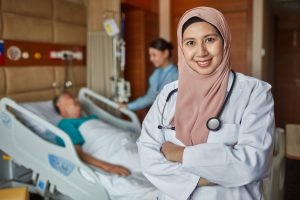

Hospice and Palliative Medicine focuses on caring for patients with advanced, serious, or life-threatening illnesses. These patients may have a high symptom burden, face complex treatment decisions or be near the end of their life.
Your clinical rotation may include a clinical rotation experience with Samaritan Primary Care at Home; the hospice admission department; a hospice team visiting patients in their homes; or in one of our state-of-the-art inpatient centers.
How to Apply: Boccolini Institute Clinical Rotation Application
Questions: [email protected]
Routine Home Hospice: You will shadow an interdisciplinary team who cares for patients receiving the routine level of hospice care in their home, assisted living facility, or a nursing home. You will participate in meetings with the interdisciplinary team and discuss each patient’s plan of care including alleviating pain and symptoms, attending to emotional and spiritual needs, and honoring patient goals and wishes. You will then follow a clinician as they execute this plan of care during home or facility visits.
General Inpatient Level of Care: You will shadow complex hospice patients at the general inpatient (GIP) level of care that focuses on pain control or symptom relief that cannot be managed in other settings. GIP level of care may be provided in one of three settings: a Medicare-certified hospice inpatient center, a hospital, or a skilled nursing facility.
Hospice Admissions: You will shadow the process of coordinated hospice admissions with a Samaritan nurse liaison. Experiences will include a review of patient referrals, discussions about care options with patients and family members, and initial care planning. In addition, the student will gain an understanding of the role of facilitator of medical information across care settings and relationship building strategies to enhance patient care.
Primary Care in the Home: You will shadow a primary care advanced practice provider (APP) delivering whole patient care to persons with chronic illness in homes and facilities. The student will gain valuable experience in a model of care delivery that lessens health disparities and increases access to care for vulnerable populations.